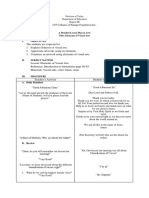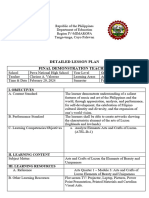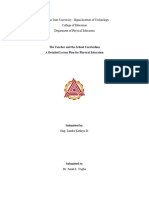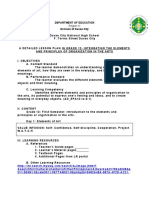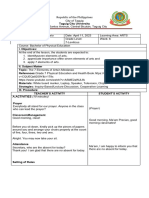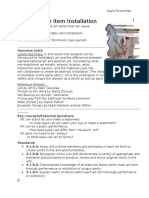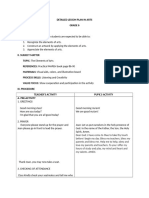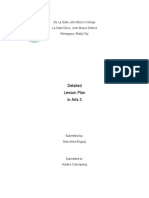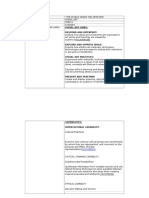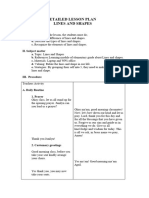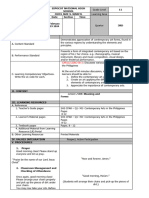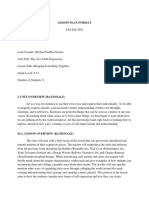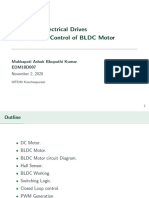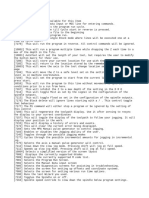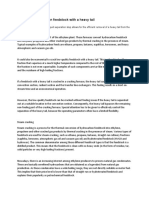0% found this document useful (0 votes)
17 views12 pagesMidterm Demo
This document outlines a detailed lesson plan for teaching the elements of art in a contemporary Philippine arts context. It includes objectives for student learning, a structured sequence of activities, and evaluation methods to assess understanding of art elements such as space, line, shape, color, value, and texture. The lesson emphasizes student participation through games, discussions, and a group artwork project.
Uploaded by
Markryan DechavezCopyright
© © All Rights Reserved
We take content rights seriously. If you suspect this is your content, claim it here.
Available Formats
Download as DOCX, PDF, TXT or read online on Scribd
0% found this document useful (0 votes)
17 views12 pagesMidterm Demo
This document outlines a detailed lesson plan for teaching the elements of art in a contemporary Philippine arts context. It includes objectives for student learning, a structured sequence of activities, and evaluation methods to assess understanding of art elements such as space, line, shape, color, value, and texture. The lesson emphasizes student participation through games, discussions, and a group artwork project.
Uploaded by
Markryan DechavezCopyright
© © All Rights Reserved
We take content rights seriously. If you suspect this is your content, claim it here.
Available Formats
Download as DOCX, PDF, TXT or read online on Scribd
/ 12
